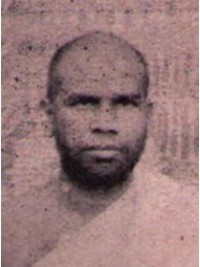Lifetime
Born: 06.04.1837Passed away: 20.05.1896
About
Swami Atma Ramji Maharaj is the popular name of the Jain Acharya Shrimad Vijaya Anand Suri, who was a Śvetāmbara Mūrtipūjaka Tapā Gaccha mendicent leader and an important reformer of Jainism in the late 19th century.
He was born in Lahara, Punjab, into a Brahmakṣatriya family. While attending school he came into contact with Sthānakavāsī monks and, in 1853, he was initiated as Sant Ātmārāmjī. His study of the scriptures led him to the conviction that image worship was the orthodox position, and so in 1876 in Ahmedabad he took a second initiation as Muni Ānandavijaya from Muni Buddhivijaya (Buṭerāyajī, 1807-1882), who also had previously been a Sthānakavāsī monk. In 1886, the Mūrtipūjaka congregation of Palitana installed him as Ācārya Vijayānandasūri.
Vijayānandasūri was invited to be a delegate at the World's Parliament of Religions in Chicago in 1893. Because his vows prohibited travel by mechanized conveyance, he appointed Vīrcand Rāghavjī Gāndhī to represent the Jain community. Based on questions that he had received from the organizers of the Parliament, Vijayānandasūri wrote a book for the occasion entitled The Chicago-Prashnottar or Questions and Answers on Jainism for the Parliament of Religions Held at Chicago U.SA. in 1893 (Agra, 1918).
Vijayānandasūri was influential in reviving the tradition of fully initiated monks (saṃvegī sadhus). He persuaded many Sthānakavāsīs in the Punjab to join the image-worshipping (Mūrtipūjaka) tradition and encouraged the construction and renovation of temples. Roughly one-fourth of the current samudāyas within the Tapa Gaccha, comprising over 400 of the mendicants in the gaccha, trace their origins back to him. Following his death, a memorial temple (samādhi mandir) was erected in Gujranwala, Punjab.
(Reference: Kristi L. Wiley: Historical Dictionary of Jainism, Lanham: Scarecrow Press, 2004, p. 231).
